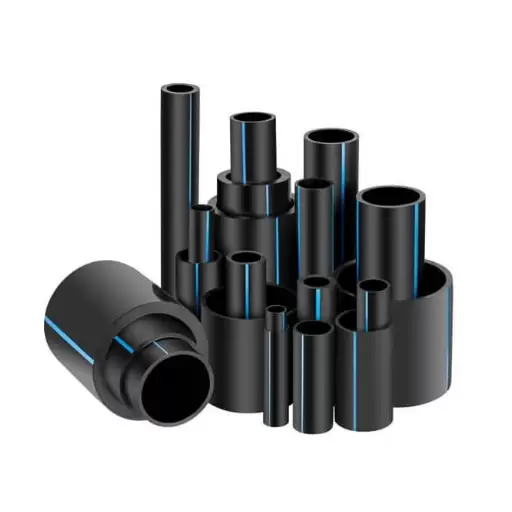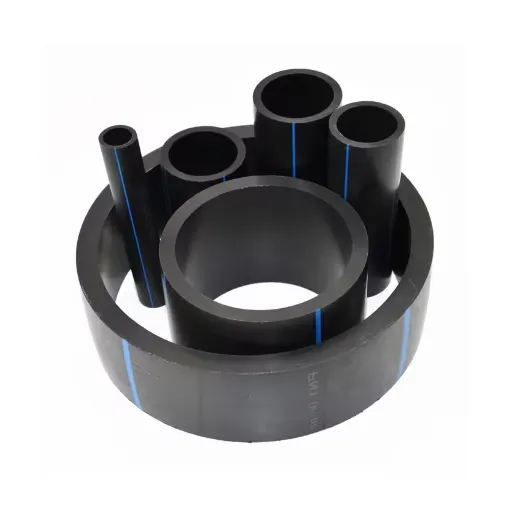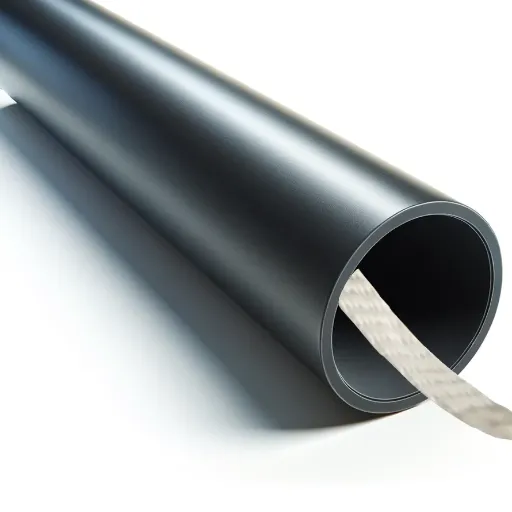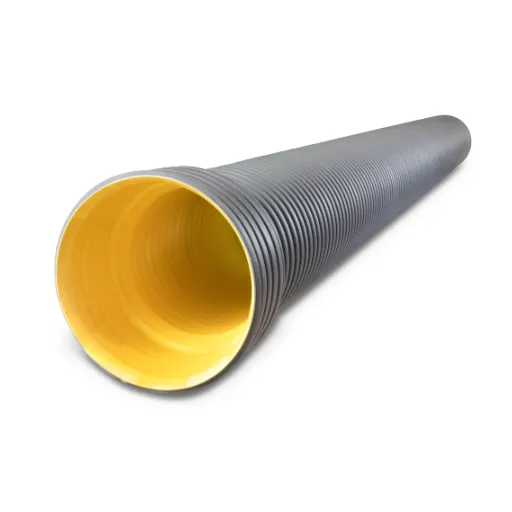High-Density Polyethylene (HDPE) pipes have revolutionized industries with their unmatched durability, flexibility, and cost-efficiency, making them an essential component in modern infrastructure. Selecting a trusted HDPE pipe manufacturer is critical to ensuring quality, performance, and long-term reliability for projects that demand excellence. At Industrial Solutions, we pride ourselves on being an industry leader, delivering innovative solutions tailored to meet diverse needs across sectors such as agriculture, construction, mining, and utilities. This article explores why Industrial Solutions sets the benchmark in HDPE pipe manufacturing, highlighting our commitment to precision engineering, advanced technology, and unmatched customer support. Stay tuned to discover how we can help you achieve your project goals with superior quality and expertise.
How Does an HDPE Pipe Manufacturer Ensure Quality and Durability?

What is the Manufacturing Process for HDPE Pipe?
The procedure for manufacturing high-density polyethylene (HDPE) pipes starts with sourcing top-quality raw materials. These include polyethylene resin, which needs to pass grading and inspection processes to ensure global standards relating to strength, flexibility, and temperature resistance. The process starts with placing the resin in a hopper; the resin is then melted and homogenized in an extruder. At this stage, the extruder is critical, as its advanced pumps must achieve consistent heating and pressure throughout the entire extruder to improve the material’s molecular integrity, which is crucial for durability and high performance.
Once the resin has been melted, it then goes into molds that shape it into the pipe. The extruded pipe is then passed into a vacuum calibration tank where its structure is set. In this tank, the dimensions of the skimmer are constantly adjusted to ensure stringent control over precise dimensional accuracy. At the same time, processes are applied to the pipe that assist in preventing deformation and ensuring uniform structure throughout the pipe. At this stage, high precision checks are carried out for wall thickness, concentricity, surface flaws, and other geometry checks to ensure the pipes can meet high-performance standards and high-pressure applications.
For the final step, the pipes are cut to a specific length and undergo post-production inspections. These inspections check whether the product has passed hydrostatic testing, evaluative tensile strength testing, and surface integrity checks to confirm compliance with the defined set of industry standards (ANSI, ASTM, and ISO benchmarks). This detailed HDPE pipes manufacturing process ensures the pipes are durable and will withstand challenging operational conditions, enhancing the pipes’ life cycle.
How is Durability Tested in HDPE Pipes?
The HDPE (High-Density Polyethylene) pipes require an evaluation along with the combination of various procedures to ensure accuracy. One way is hydrostatic pressure testing, which is when the pipe is put under very high water pressure for a long time. Hydrostatic pressure testing measures the time it takes for internal pressure without any changes to internal structure or failure of some sort. This also helps to imagine real-life scenarios for water distribution and gas drilling.
Environmental stress cracking (ESCR) is another important factor. This tests how much the pipe can tolerate when placed in an environment with certain limits, put under high stress else with some sort of weak chemical, and measure how much it can tolerate without having cracks. ew CR testing is very important because it proves both chemical and physical endurance of a material which ensures endurance of usage in difficult conditions over a while.
For HDPE pipes to be considered complete, impact testing is ensured too. This entails subjecting the pipe to measured impacts at various temperatures and fracturing it whilst considering the chances of it resisting fracture or cracking to test its performance under sudden and extreme forces. These series of tests help set industry standards and provide assurance to the consumers that the products offered are accurate, trustable, and rugged.
What Are the Benefits of Using HDPE Products in Industrial Applications?
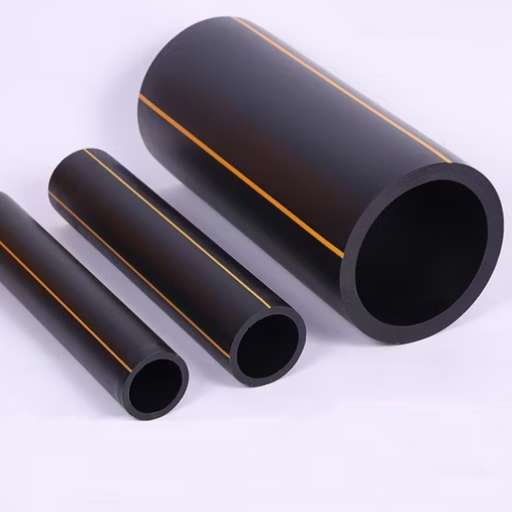
Why Choose HDPE Pipe for Gas Distribution?
High-Density Polyethylene (HDPE) pipes became a common solution for gas distribution systems because of the favorable mechanical attributes and operational benefits they provide. Primarily, HDPE pipes are low-density polyethylene as these pipes are lighter in weight compared to iron or steel. This makes their transport and installation cheaper, easier, and more efficient. Furthermore, their flexibility provides effortless fittings even in tough terrains, reducing the number of fittings needed.
Gas distribution networks make use of HDPE pipes because their exceptional chemical resistance ensures long-term reliability. One of the most important advantages of utilizing HDPE pipes is the durability they provide against potentially corrosive substances. Moreover, HDPE pipes possess cracking and fatigue resistance alongside reliable performance during pressure changes, ensuring longevity — over 50 years with typical operating conditions.
From a safety standpoint, HDPE pipes reduce leaks as a result of their seamless joint fusion technology, which creates a bond stronger than the pipe itself. The chance of leakages mitigates the gas distribution dangers, providing exceptional dependability and asset safety. Also, having a wide temperature range makes HDPE suitable for different environments, which enhances its use in various industries. Considering these advantages, HDPE pipes are the most economical option for safe and reliable gas distribution services.
How Does HDPE Fabrication Benefit the Oil and Gas Industry?
The oil and gas sector benefits in multiple ways from HDPE (High-Density Polyethylene) fabrication because of its unique features. Its unparalleled corrosion resistance allows it to perform well and last for a long time on onshore and offshore pipeline systems. Unlike older materials used in construction, HDPE is chemically immune to ravaging elements like hydrogen sulfide, hydrocarbons, and saline environments, which are abundant in fossil fuel production and transport.
Since HDPE is lightweight, its transportation and installation costs are lower since less labor and heavy equipment is needed in comparison to steel pipelines. Along with this, HDPE pipes are highly flexible and will not snap under the pressure of Ground movement, stress, or thermal expansion. This resilience is especially useful in regions with severe weather conditions or those prone to earthquakes.
HDPE pipes are essential in achieving sustainability goals due to the fusion processes done to them, which create joints that are as strong as the material. Such processes include butt fusion welding and electrofusion. With such reliable seals, the pipes will not leak gas or liquid, which minimizes environmental impacts. Also, this helps strict regulations that focus on safety and eco-friendliness.
The internal surface is smooth which reduces friction as well as energy consumption during fluid movement. This supports critical efficiency objectives for oil and gas operations. Accomplishing these objectives places HDPE at the forefront of innovation while ensuring dependable infrastructure.
What Makes HDPE Pipe a Cost-Effective Solution?
The use of High-Density Polyethylene (HDPE) pipes comes with volumes of savings that stem from the usage of the resource over time because of its durability and low maintenance demands. Its high chemical resistance makes it cost-effective as damages to the material and repairs are minimal. Added to this is the ease with which HDPE pipes can be lifted, making their transportation easy, while installation costs also take a dip when compared with steel and concrete.
The flexibility of HDPE reduces the overall downtime of critical business undertakings, making it cheaper while shortening the need for manual labor that has to be employed with rough-terrained sites other than the actual working grounds. Its versatility allows for the use of virtually no-dig installations like horizontal directional drilling, which further reduces the money spent on recovering site surfaces.
It is known that HDPE pipes have a life span of 50 to 100 years under standard conditions which only increases their cost-effectiveness. Considering the long operational effectiveness and lower environmental impact, HDPE is optimal from a financial and sustainability perspective for various uses such as water distribution, gas transport, and wastewater management.
What Are the Key Specifications for Polyethylene Pipe?
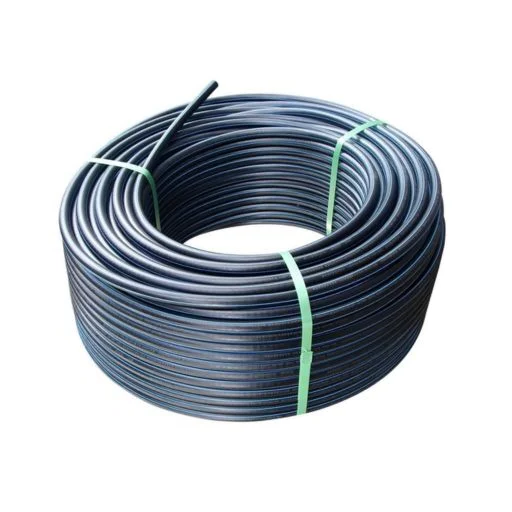
How Does PE4710 Enhance HDPE Pipe Performance?
PE4710 is a form of polyethylene that adds further value and dependability to HDPE pipes. Its molecular structure provides better SCG delay resistance, hydrostatic design basis HDB, rated at 1600 psi at 73°F, and HDB superiority. Enhanced capabilities provide better long-term performance in pressure applications, significantly lowering the risk of material failure due to operational stress.
Due to greater environmental and chemical degradation, environmental factors, and corrosive or abrasive conditions, PE4710 is ideal for harsh environments. Its higher density improves overall strength while maintaining structural integrity over time which enables thinner wall dimensions on pipes allowing higher pressure ratings. This reduces costs in transportation, installation, and material savings.
In addition, new industry standards like ASTM F714 and AWWA C906 specifically highlight the superiority of PE4710, distinguishing it for use in water, gas, and industrial services. It’s added thermal strength and durability enables reliable operation of PE4710 pipelines during extreme temperature weather, which enhances their lifespan. Therefore, using PE4710 in HDPE piping systems is a significant improvement in performance, safety, and cost effectiveness.
What Are the ASTM Standards for HDPE Pipe?
|
Standard |
Description |
Size Specifications |
Key Application Areas |
|---|---|---|---|
|
ASTM F714 |
Standard for PE pipe in pressure applications |
4 inches and above |
Water and industrial piping systems |
|
ASTM D3035 |
Polyethylene pipe for pressure-rated applications |
½ inch to 3 inches |
Potable water and irrigation |
|
ASTM D3350 |
Specification for raw material classification of polyethylene compounds |
N/A |
Material quality for HDPE pipes |
|
ASTM F2619 |
Standard for PE pipe in high-temperature applications |
Varied sizes |
Oil, gas, and industrial pipelines |
|
ASTM D2239 |
Specification for polyethylene tubing based on inside diameter |
Varied, typically ½ inch to 2 inches |
Low-pressure water service |
|
ASTM D2513 |
Standard for polyethylene gas pressure pipe |
Varied, depending on gas system requirements |
Natural gas distribution |
The above-mentioned standards outline the measurements, performance metrics, and areas of application relevance of HDPE pipes while confirming that the Industry Injunctions that deal with life safety and operational efficiency requirements are met.
How Does ISO Certification Impact HDPE Pipe?
Through the issuance of ISO certifications, the quality HDPE pipes undergo further enhancement about safety and performance, as these marks set industry standards that must be followed during production. As an example, “ISO 4427” contains engineering specification for polyethylene pipes about water supply with regards to intended use, durability, chemical resistance, and pressure construction capability, compliance to ISO standard ensures that certain criteria are met in the material, pipes, tensile sstrength and endurance to senvironmental stress cracking which is predominant in demanding projects.
Traceability and accountability is further enhanced through ISO certification which results in improved tracking throughout the manufacturing cycle. Through quality controls and tests of compliance, manufacturers can guarantee that each batch of produced pipes meets the set standard. This is crucial in the manufacture of potable water systems and gas distribution systems where there is no room for error in safety and reliability.
Economically speaking, firsthand, those who know there are ISO certified HDPE pipes opt to use them in huge infrastructural undertakings because they are proven to be cost-effective over time. These standards give confidence to engineers and project managers when considering system adaptability, as the diverse environmental conditions pose risks of system failure. Confidently integrating the ISO standards during project design and execution works, the overall life cycle cost of HDPE pipe systems within the projects gets greatly lowered while still meeting all regulatory frameworks, operational requirements, and reliability targets.
Why is Customization Important in HDPE Pipe Solutions?
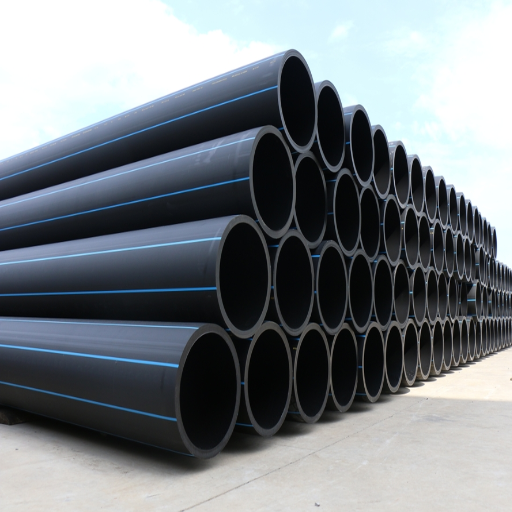
What Are the Advantages of Custom HDPE Fabrication?
Custom HDPE (High-Density Polyethylene) fabrication provides specialized services which benefit specific projects to construction, agriculture, and infrastructure. Unlike standard piping systems, customized HDPE solutions can be tailored to specific dimensions, environmental settings, fluid pressures. Such precise customization provides an ideal fit, minimizes material wastage, and limits complicated adaptive processes during the installation phase. Custom enhancements also allow the solution to be tied seamlessly with the existing infrastructure, therefore reducing reconstructions.
From the blended perspective of efficiency, custom HDPE fabrication increases reliability and life span. Pipes made with HDPE material have high resistance for corrosion, chemical degradation, and even stress cracking. These features are further increased when implemented for particular operational guidelines. In contrast, aggressive environments such as elevated temperatures, high pressure, and hostile chemicals are no longer extremes, but the new normal.
Adopting custom solutions also aligns with cost-efficiency objectives. Although tailored systems appear more expensive at first, long-term savings from maintenance, reliable operations, and extended service life often pay back what was spent. In addition, custom components are fabricated with sophisticated technologies like 3D modeling, which, coupled with high-precision welding, ensures acceptable tolerances and identical standards within the parts.
Custom HDPE fabrication helps supports sustainability initiatives by reducing resource consumption while increasing the useful life of infrastructure systems. This makes it a favorable option for businesses that focus on protecting the environment. Customized systems not only fulfill critical requirements of a project but also meet all relevant benchmarks which minimizes the liabilities associated with design or material failure.
How Does an HDPE Pipe Manufacturer Offer Custom Solutions?
To deliver solutions refined to project specifications, HDPE pipe manufacturers incorporate advanced design strategies, precision machining, and modern HDPE manufacturing techniques. With the aid of 3D modeling and CAD programs, a prototype can be created that is both highly accurate and compatible with other existing systems. Also, various grades of HDPE materials are used where strength, flexibility, and chemical resistance are optimized according to the application for potable water systems, wastewater systems, or industrial fluid systems.
Tailored fittings and custom-sized pipes are other services offered, wherein the pipes can be set to specified diameters and wall thicknesses, ensuring efficiency under unique conditions. Also, custom flange stub ends can be added to elbows and fabricated straight assemblies. Various fusion technologies such as butt fusion and electrofusion enable the creation of seamless and reliable joints and minimize failure points while maximizing lifespan of operations.
Relying on close collaboration with engineers and other stakeholders, manufacturers exceed industry standards like ASTM and ISO. About global durability and risk, this focus does a lot to reduce time, mitigate risks, and guarantee long-term performance, making HDPE piping a sustainable option for numerous infrastructure projects around the world.
What Role Does HDPE Fusion Play in Customization?
HDPE fusion contributes particularly to how piping systems are customized to perform for tailored projects. Such processes are butt fusion, electrofusion, and socket fusion, and they all require HDPE pipe surfaces to be heated for seamless, leak-proof attachment. Fusions remove the need for mechanical connections, which minimize weak points in the system, and with fusion, there is greater precision.
Complex installations and other types of remote locations are easily tailored through advanced fusion HDPE equipment, allowing for intricate configurations. Crafting joints on hinges and a pipeline’s different sections is also possible, maintaining the proportions and pressure.
Fusion further easily adapt to the changes in the design of a pipeline which allows work obstacles to be flexibly dealt with during work execution. The latest research studies highlight that pipelines with fused piping have an easier lifetime with lowered maintenance, costs greatly benefiting project goals, industry standards, and best practices.
How Do HDPE Piping Systems Contribute to Sustainability?
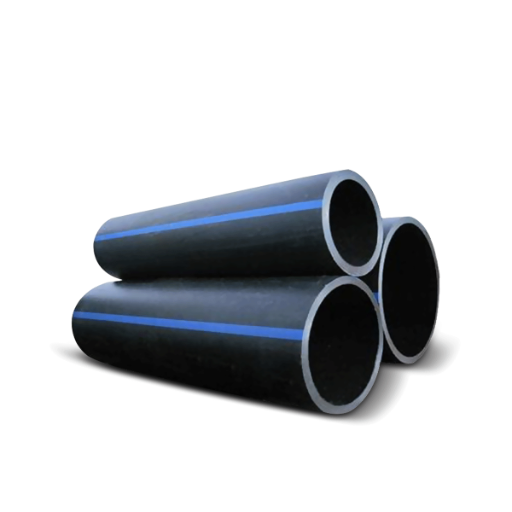
What Makes HDPE Pipe Environmentally Friendly?
The unique properties of High-Density Polyethylene (HDPE) pipes and their lifecycle benefits make HDPE piping systems one of the most environmentally friendly systems. The non-toxic materials used in manufacturing HDPE pipes, along with their 100% recyclability, guarantee a shred reduction in operational waste at the end of operational life. Moreover, the pipe’s non-ecotoxic production results in less energy consumption than traditional piping systems. HDPE pipes undergo a much simpler manufacturing process, which reduces greenhouse gas emissions.
Reduction in fuel consumption due to the lightweight design of HDPE pipes also makes transport and installation significantly easier, increasing the cost of efficiency. Additionally, the operational lifespan of these pipes is upwards of fifty years, meaning raw material and other associated environmental costs during replacement will significantly decrease. The remarkable resistance to peeling, scaling, corrosion, and biological build-up further enhances the eco-friendliness of HDPE pipes due to the lack of necessity to use polluting chemicals or coatings.
From a sustainability perspective, HDPE pipes excel in sustainable resource use. Flexibility combined with the high strength of the material makes it ideal for construction located in high-stress environments as it ensures containment and leak prevention. The reduced maintenance adjustments combine with low operational costs make the pipes and the resource management systems make it viable.
How Does HDPE Help in Reducing Leak-Free Installations?
The material and jointing characteristics of HDPE pipes distinguish them for leak-free installations. One of the primary reasons that makes HDPE leak-free is its quilting technique, which is a unique fusion welding method. Unlike traditional pipe systems, which use gaskets or other mechanical joints, HDPE pipes use heat fusion to join the pipe sections. This method of pipeline welding creates no possible points of weakness. The joints created using heat are as strong as the pipe itself. In careful constructions, the likelihood of leaks, even over extensive periods, is greatly minimized. Further, these joints can withstand extremely high pressures.
Along with that, HDPE pipes possess great flexibility, tolerance to environmental stresses, cracks, and other crucial factors that may compromise the pipeline’s structural integrity. They also have great impact resistance and can withstand a great deal of shocks, therefore, they can be used in many prone areas such as seismic zones and unstable soil areas. The ability of these pipes to withstand strong forces without getting damaged ensures there will be no leaks during their service life.
HDPE pipes help prevent leaks economically and with performance due to their smooth internal surfaces, which minimize friction and reduce pressure losses. Unlike traditional materials susceptible to corrosion or internal scaling, HDPE pipes conserve flow rates and decrease the likelihood of clogging. These benefits improve the dependability of fluid transport while reducing maintenance, operational costs, and augmenting efficiency. This makes HDPE the best choice for modern infrastructure built around pipelines that need to be free of leaks.
How Are HDPE Products Recycled?
Like any other recycling method, high-density polyethylene (HDPE) recycling also has its series of steps that need to be performed carefully to guarantee the best possible result. The first step in HDPE recycling is collecting and sorting every single item that falls into the HDPE category, which includes containers, bottles, and pipes. Specialized machines such as infrared scanners are used to automatically sort out HDPE and band it along with its fellows, further, the item is put into a density separator to remove dirty non-HDPE plastic materials.
After HDPE is sorted, the next stage is cleaning due to the inclusion of mixed non-HDPE plastic materials and labels that need to be removed. During the cleaning stage, shredded and label-free HDPE can be turned into tiny granules or flakes through cutting as well. The granules are then melted into liquid resin pellets like material, this process is called extrusion. The result is labeled as recycled resin, which serves as the primary ingredient needed to manufacture fresh HDPE products such as containers, piping, and construction materials.
The advantages of recycling HDPE have had an important impact on the industry. The product not only has resulted in less recyclable waste materials thrown into the landfills, but has also assisted in lowering the efficiency needed to obtain virgin HDPE, as it requires far more resources. Studies suggest that up to 88 percent of the energy needed to produce new HDPE materials can instead be saved if the material is recycled. Furthermore, these benefits aren’t only associated with the environment. There is also a growing scope in the usage of technology for recycling products; chemicals, for instance, are used to upcycle the HDPE material and enhance its functionality.
References
Frequently Asked Questions (FAQ)
Q: What are the benefits of using HDPE pipes over other materials?
A: HDPE pipes offer numerous benefits, including corrosion resistance, low-maintenance requirements, and long lifecycle costs. Their flexibility and durability make them ideal for a wide range of applications, including water and wastewater systems, gas pipelines, and telecommunications.
Q: Do you provide HDPE pipes suitable for natural gas distribution?
A: Yes, we offer HDPE pipes specifically designed for natural gas distribution. These pipes are engineered for safety and reliability, ensuring a secure flow of gas within municipal and industrial systems.
Q: How does Industrial Solutions address pricing concerns for HDPE products?
A: We are committed to offering competitive pricing for our HDPE products without compromising on quality. Our extensive network across North America allows us to optimize production and distribution, ensuring cost-effective solutions for our clients.
Q: What sustainable practices does Industrial Solutions adopt in manufacturing?
A: Industrial Solutions prioritizes sustainability by using eco-friendly production processes and materials. Our HDPE pipes are recyclable and designed to minimize environmental impact, aligning with our goal of providing sustainable solutions across the country.
Q: Can you provide technical support for HDPE pipe installations?
A: Absolutely, we offer comprehensive technical support for HDPE pipe installations. Our experts are available to assist with product selection, fusion equipment, and onsite guidance to ensure successful project completion.
Q: What industries typically use your HDPE pipes?
A: Our HDPE pipes are utilized across a variety of industries, including water and wastewater management, municipal infrastructure, telecommunications, and gas pipelines. They are designed to meet the demands of each sector, providing reliable performance and efficiency.
Q: Do you offer HDPE pipes in different sizes and configurations?
A: Yes, we provide HDPE pipes in a wide range of sizes and configurations, including large diameter options and striping options. This flexibility allows us to cater to diverse project requirements and industry standards.



